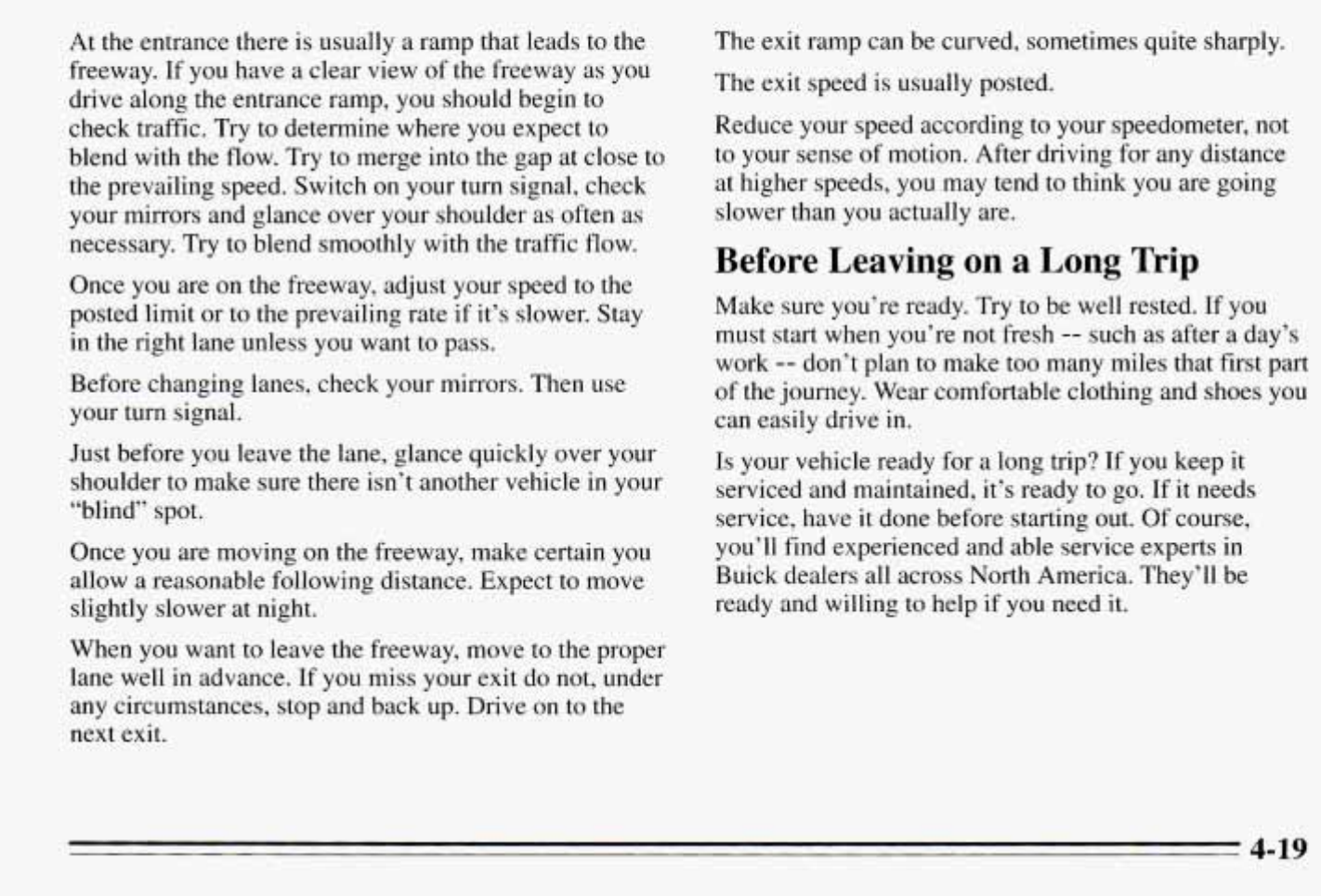
At the entrance there is usually a ramp that leads
to
the
freeway. If
you
have
a
clear view of the freeway
as
you
drive along the entrance ramp,
you
should begin to
check traffic. Try to determine where you expect to
blend with
the
flow. Try to merge into the gap at close to
the prevailing speed. Switch
on your turn signal, check
your mirrors and glance over your shoulder
as
often
as
necessary. Try to blend smoothly with the traffic flow.
Once
you
are on the freeway, adjust your speed to the
posted limit or
to
the prevailing rate if
it’s
slower. Stay
in
the right lane unless you want to pass.
Before changing lanes, check your mirrors. Then use
your turn signal.
Just before you leave the lane, glance quickly over your
shoulder to make sure there isn’t another vehicle in
your
“blind’’ spot.
Once you are moving on the freeway, make certain you
allow
a
reasonable following distance. Expect
to
move
slightly slower at night.
When you want to leave
the
freeway, move to the proper
lane well in advance. If you miss your exit do not, under
any circumstances, stop and back up. Drive on to
the
next
exit.
The exit ramp can be curved, sometimes quite sharply.
The exit speed is usually posted.
Reduce your speed according to your speedometer, not
to
your sense of motion. After driving for any distance
at higher speeds, you may tend to think
you
are
going
slower than
you
actually are.
Before
Leaving
on
a
Long
Trip
Make sure you’re ready. Try to be well rested. If you
must start when you’re not fresh
--
such as after a day’s
work -- don’t plan
to
make
too
many miles that first part
of the journey. Wear comfortable clothing and shoes you
can easily drive
in.
Is your vehicle ready for
a
long trip? If you keep it
serviced and maintained, it’s ready to
go.
If
it
needs
service, have
it
done before starting out. Of course,
you’ll find experienced and able service experts in
Buick dealers all across North America. They’ll be
ready and willing
to
help
if
you need it.
4-19


















